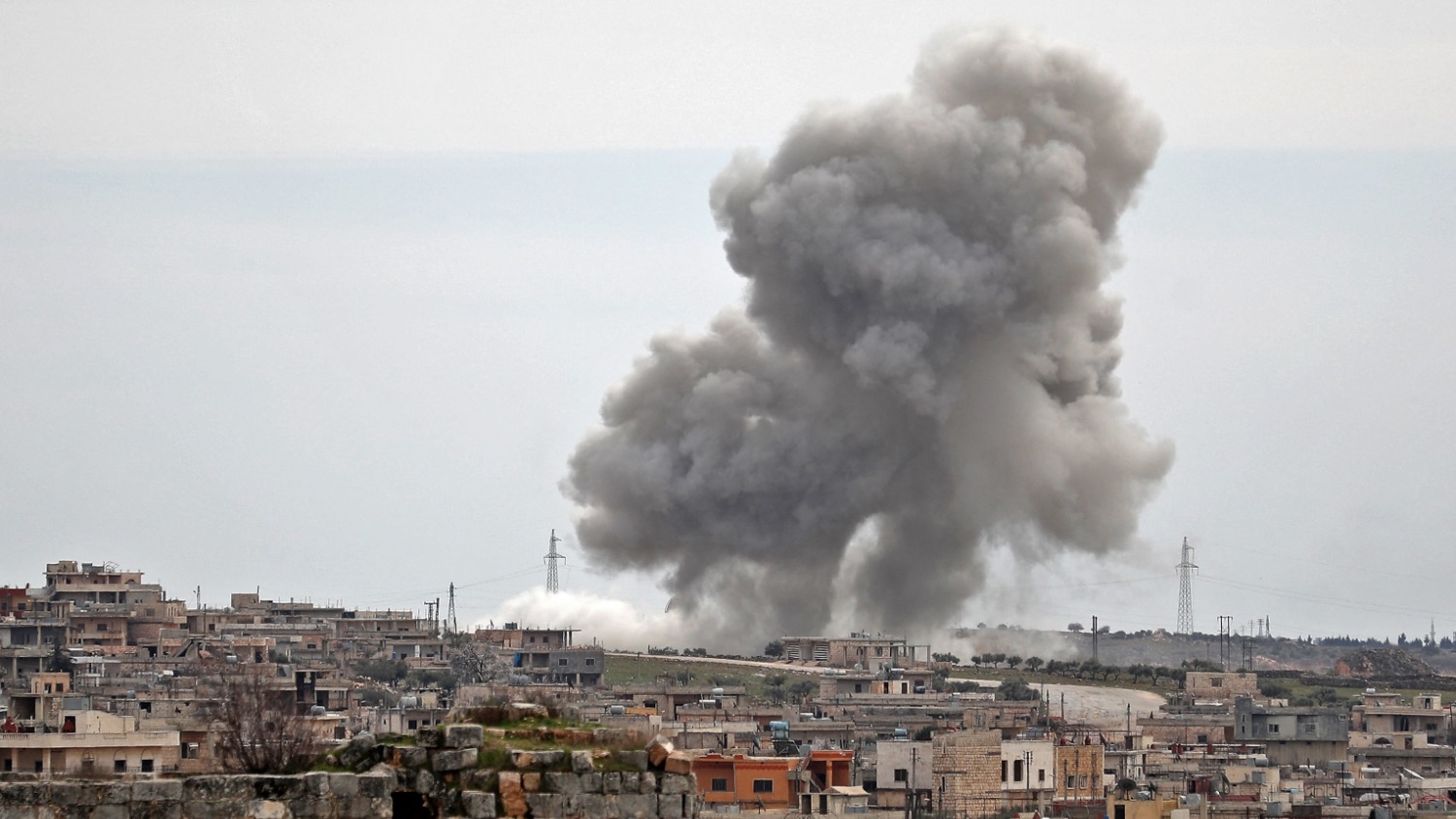New report identifies several 'double-tap' air strikes by Syrian and allied forces

A new investigative report published on Thursday has identified nearly a dozen instances where it says the Syrian government and allied forces engaged in "double-tap" air strikes to target hospitals and "intentionally harm persons and objects protected by international humanitarian law".
The report, published by the Washington-based Syria Justice and Accountability Centre, builds on a previous study on "double-tap" strikes in Syria.
"Double-tap" strikes have become increasingly common in modern warfare. The military tactic, which could violate international humanitarian law, is when armed drones or warplanes attack a site and then return to attack the same area again as people carry out rescue work.
Thursday's report highlights what it refers to as a variation of these strikes, in which the Syrian government and allied forces struck an initial location, then struck the hospital where the injured were brought, "maximizing damage to the wounded as well as medical personnel and facilities".
"The cases examined in this report constitute an especially pernicious variation on such tactics, in which Syrian government and allied forces first struck a civilian target and subsequently attacked a nearby medical facility," the report said.
"By destroying the health infrastructure, the Syrian government has nullified the ability of these areas to provide care for injuries, chronic diseases (such as cancer), and communicable diseases."
Using a combination of Syrian government documents obtained by the group, satellite imagery, social media, and direct interviews, the report found 11 instances that matched the patterns of these types of consecutive air strikes. The report detailed five of these instances.
"This investigation is another example which shows the extent to which the Syrian government and its allies have pursued military strategies designed to maximize civilian harm," Zachary Cuyler, lead author of the investigation, said in a news release on Thursday.
"Our report identified a pattern in which pro-government forces would first launch a strike on a target and then attack the hospital to which casualties from the first strike were brought."
Pro-government forces in Syria, the Saudi-led coalition in Yemen and Israeli operations in Gaza have all come under fire for reportedly intentionally targeting civilians and first responders attending to the injured.
The report also said that the Russian military was likely involved with the "double-tap" strategy, given that media sources and independent war monitors identified several of the strikes stemming from Russian warplanes.
Russia has been among the top political, economic and military backers of the government in Damascus, and at the invitation of Syria, intervened militarily in the conflict in September 2015.
Moscow has maintained a military presence at its Hmeimim air base, near the city of Latakia, since it entered the civil war.
The Syrian Observatory for Human Rights has put the total death toll from the Russian air strikes in Syria at more than 21,000, including 8,697 civilians, a quarter of whom were children.
Almost half a million people have been killed in the civil war, with millions more displaced and large parts of the country devastated.
Since Moscow's invasion of Ukraine, which began in February, Russian air strikes in Syria have decreased, resulting in fewer deaths, according to the Observatory.
A total of 241 people have been killed by Russian strikes in Syria during the past year. Most of these were Islamic State (IS) fighters, but the figure also includes 28 civilians, said the UK-based advocacy group said.
Middle East Eye delivers independent and unrivalled coverage and analysis of the Middle East, North Africa and beyond. To learn more about republishing this content and the associated fees, please fill out this form. More about MEE can be found here.





